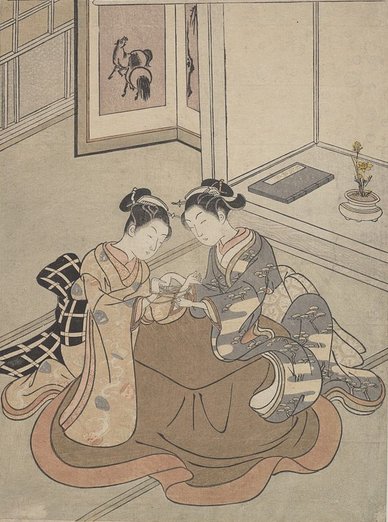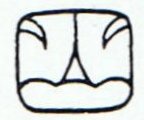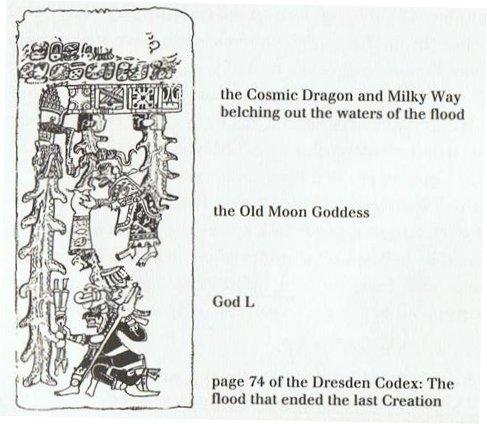We should look also at Bb2-37 (489 = 421 + 68; = 369 + 120 = 52 + 369 + 120 - 52):
My suggested preliminary overview of side a on the B tablet needs to be completed with a similar overview of its side b:
Assuming a continous flow of right ascension days we can define the relevant stars at Bb2-37 by adding 8 + 68 = 76:
This is interesting because Al Tarf (β Cancri) rose with the Sun in the day preceding the Bright Fire (λ Cancri):
Counting ahead 183 days from the heliacal (Sun) date will bring us to the corresponding nakshatra (Full Moon) date. MAY 20 (140, *60) + 183 = NOVEMBER 19 (323, *243). The star Al Tarf (*124) would at the time of the Bull have risen *64 right ascension days earlier than at the time of rongorongo. MAY 20 (*60 = 140 - 80) + *64 = July 23 (*124 = 204 - 80). The glyph number 60 at Al Tarf = 140 (MAY 20) - 4; corresponding to the position of heliacal Aldebaran:
The star Gredi (*307) was at the Full Moon when the Sun reached Al Tarf (*124), because 124 + 183 = 307. At the time of rongorongo Al Tarf was in day 80 + 124 = 204 (July 23) which was 183 days after January 21 (= 204 + 183 - 366). At the time of the Bull these dates would have been 64 days earlier:
It might be a coincidence, but we should here remember that November 18 was when on Hawaii the coco-nut should be broken.
Then we could try to dissect 183 into 118 (= 4 * 29½ nights) + 65, because 288 + 1 right ascension days after Al Tarf, when the star Zibal (*413 = *118 + *295 = *365 + *48) rose with the Sun, the corresponding nakshatra star could have been said to be Dubhe (a name similar to Dabih) at *166 = *531 - *365 = *48 (Zibal) + *118. For the Sun cycle did not stretch beyond 365¼, and a quarter of 472 (= 16 * 29½) beyond Zibal was Dubhe (*166), the Bear. The Moon (nighttime) calendar was probably more ancient than the Sun calendar.
When the Rainbird alighted (on) the Upraised Reef with Freshwater Pools this could perhaps have been illustrated thus:
There is a vertical arrangement indicating an egg-like object below the hovering 'bird' with 'no legs' (vae kore). Legs were not required when swimming in the sea but necessary for moving up-on the dry land. ... During his descent the ancestor still possessed the quality of a water spirit, and his body, though preserving its human appearance, owing to its being that of a regenerated man, was equipped with four flexible limbs like serpents after the pattern of the arms of the Great Nummo. The ground was rapidly approaching. The ancestor was still standing, his arms in front of him and the hammer and anvil hanging across his limbs. The shock of his final impact on the earth when he came to the end of the rainbow, scattered in a cloud of dust the animals, vegetables and men disposed on the steps. When calm was restored, the smith was still on the roof, standing erect facing towards the north, his tools still in the same position. But in the shock of landing the hammer and the anvil had broken his arms and legs at the level of elbows and knees, which he did not have before. He thus acquired the joints proper to the new human form, which was to spread over the earth and to devote itself to toil ... The 15th Chinese station was Legs, associated with the Wolfgod, the Opener of the Way (Upwaut) in April 1 at η Andromedae.
I guess the word hayt (heth, eta) is a version of haut (fish), as in Fom-al-Haut (the Mouth of the Fish, *347) which at the time of the Bull had been in DECEMBER 29 (at that ancient time the last day of the old year).
Reading Maya-wise from right to left we can see the emergence of the quincunx of Sun light after the nighttime glyph in the center.
... Fakataka ['completing a cycle'] swims and swims, reaching another land. She goes there and stays on the upraised reef in the freshwater pools on the reef, and there delivers her child, a boy child. She gives him the name Taetagaloa.['not Tagaroa', i.e.not the Sea] When the baby is born a golden plover flies over and alights upon the reef. (Kua fanau lā te pepe kae lele mai te tuli oi tū mai i te papa). And so the woman thus names various parts of the child beginning with the name 'the plover' (tuli): neck (tuliulu), elbow (tulilima), knee (tulivae) ...'
In contrast to the hovering bird above generating a blinding flood(of)light below we can look at a similar glyph in the A tablet which seems to refer to the opposite, viz. to how inundating rain water (ua) is pouring from the nightside Beast above - making vision pour: ... The jaguar learned from the grasshopper that the toad and the rabbit had stolen its fire while it was out hunting, and that they had taken it across the river. While the jaguar was weeping at this, an anteater came along, and the jaguar suggested that they should have an excretory competition. The anteater, however, appropriated the excrement containing raw meat and made the jaguar believe that its own excretions consisted entirely of ants. In order to even things out, the jaguar invited the anteater to a juggling contest, using their eyes removed from the sockets: the anteater's eyes fell back into place, but the jaguar's remained hanging at the top of a tree, and so it became blind. At the request of the anteater, the macuco bird made the jaguar new eyes out of water, and these allowed it to see in the dark. Since that time the jaguar only goes out at night. Having lost fire, it eats meat raw. It never attacks the macuco ... ... Originally the highly born family of the Sun, Moon, and stars dwelt in a cave on the summit of Maunga-nui, Great Mountain, in the ancient homeland. They were not at all comfortable in their gloomy home for they could not see distinctly and their eyes watered constantly ...
... Here is wisdom. Let him that hath understanding count the number of the beast: for it is the number of a man; and his number is Six hundred threescore and six...
|
|||||||||||||||||||||||||||||||||||||||||||||||||||||||||||||||||||||||||||||||||||||||||||||||||||||||||||||||||||||||||||||||||||||||||||||||||||||||||||||||||||||||||||||||||||||||
















.jpg)








